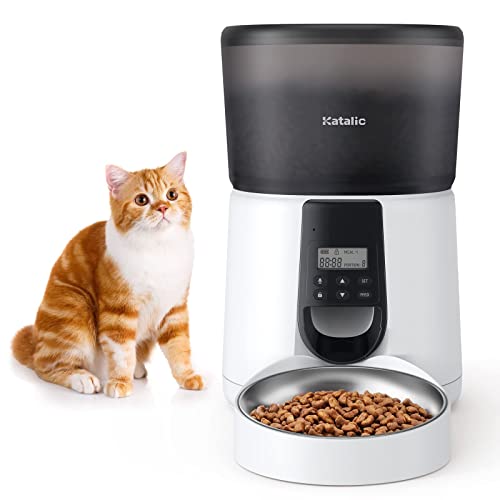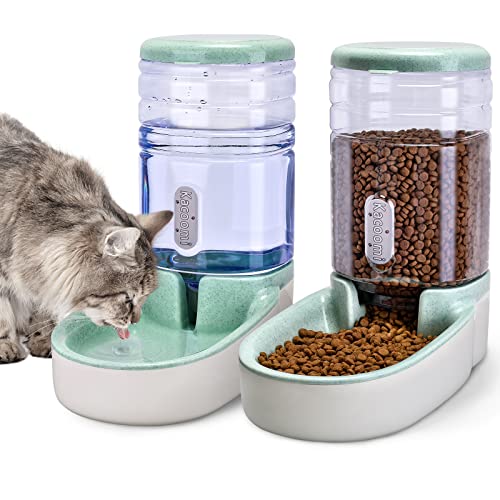First things first, let’s address the elephant in the room, or rather, the ear in the room: cat hearing is not just louder than ours, it’s fundamentally different. We humans operate within a certain auditory range, comfortable with the sonic landscape we perceive. Cats, however, inhabit a world of sound frequencies that often leave our human ears in the dust. They can hear much, much higher frequencies than we can, sounds that are simply beyond our auditory perception. Think of it like this: our musical taste is like a perfectly crafted painting, rich in color and detail… within a limited palette. Cat hearing, on the other hand, expands that palette exponentially, adding whole new dimensions of sonic information, including frequencies that, to us, are simply… silence. This heightened auditory range, this ability to perceive sounds in the ultrasonic realm, is not just for show; it's a crucial evolutionary adaptation honed over millennia of hunting small, squeaky prey. Rodents, their primary targets in the wild (and, let’s be honest, still occasionally in your basement), communicate and navigate using high-frequency sounds. Cats have evolved to be exquisitely attuned to these frequencies, turning their ears into finely tuned prey-detecting radar systems.
Now, consider your average human music playlist. What do you hear? Likely, a blend of mid-range frequencies, vocals, melodic lines, rhythmic beats. What might your cat hear? Potentially, a relentless, overwhelming barrage of high-pitched sounds, frequencies that are grating, irritating, and downright stressful to their hyper-sensitive ears. Imagine a symphony of tiny squeaking rodents… played at ear-splitting volume. Yeah, that's heavy metal to a cat. And that’s why subjecting your feline companion to a Metallica marathon is likely to elicit not head-banging appreciation, but hissing, frantic hiding under the sofa, and the distinct possibility of finding your favorite armchair mysteriously shredded in protest. Heavy metal, with its distorted guitars, aggressive drumming, and often high-pitched vocals, is a sonic assault on feline sensibilities. Expect hissing, hiding, and potential furniture scratching in direct and vehement protest.
Pop music, especially the overly synthesized, high-pitched, auto-tuned variety that dominates the airwaves? Those earworm pop anthems you love to sing along to in the car? Your cat probably hears a relentless barrage of high-pitched squeals, digital screeches, and artificially enhanced frequencies that are, to their sensitive ears, akin to a non-stop dentist drill convention. Think nails on a chalkboard, but catchier… and equally irritating over extended periods. The artificial sounds, the repetitive high notes, and the often-compressed, digitally “loud” production of modern pop music are simply not designed for feline auditory comfort.
Classical music, you might think, surely classical music is refined, sophisticated, and therefore, cat-approved? Ah, not so fast, classical music enthusiast. While some gentle, mellow classical compositions might be tolerated, even occasionally enjoyed by certain feline connoisseurs (we’ll get to that later), avoid anything Wagnerian, anything aggressively dramatic, anything that involves booming timpani, soaring trumpets, or overly dramatic operatic vocals. Your cat isn’t ready for an opera about heartbreak, they just want a nap, not a sonic emotional rollercoaster designed to evoke existential angst. The sheer orchestral swells, the dissonant harmonies, and the dramatic shifts in dynamics common in many classical pieces can be overwhelming and unsettling for feline sensibilities.
And loud, bass-heavy music, of any genre? Oh, dear human, please, for the love of all that is furry and feline, just… don’t. That booming bass you feel vibrating in your chest during your favorite hip-hop track? Your cat feels it in their entire body. Imagine a constant, low-frequency earthquake soundtracking your nap. Not zen. Not relaxing. Downright terrifying for a creature of delicate sensibilities and a deep-seated aversion to unnecessary vibrations. Bass frequencies, especially at high volumes, can be physically unsettling and even distressing for small animals like cats, triggering anxiety and discomfort.
So, what sonic landscapes do tickle the feline fancy? Are there melodies that might actually induce a purr of contentment, rhythms that won’t send them sprinting for the nearest dark corner? Fear not, music-loving cat owners, for the answer, surprisingly, is yes. Enter the burgeoning and increasingly bizarre world of “cat music.” Yes, you read that right. Music specifically designed, meticulously crafted, and scientifically engineered… for cats. It’s a thing. And it’s actually kind of fascinating. The rise of “cat music” stems from the understanding that human music often misses the mark, sonically speaking, for feline ears. Composers and researchers, bless their feline-loving hearts, have begun to create music that utilizes frequencies, tempos, and melodic patterns that are within a cat’s natural vocalizations and calming frequencies. Think soothing purrs, gentle bird chirps, the rustling of leaves in a gentle breeze, the calming rhythm of a mother’s heartbeat… all blended together into surprisingly listenable tunes. Imagine nature sounds, but remixed for maximum feline chill, and with a decidedly feline-centric sonic palette. You can find entire playlists and even artists dedicated to “Music for Cats” online – search them out, prepare to be mildly bewildered, and then… maybe, just maybe, your cat will actually seem to… tolerate it. Or even, dare we hope, enjoy it.
But even beyond specifically designed “cat music,” there are genres and musical elements within human music that can be surprisingly feline-friendly, in moderation, of course. Gentle and calming selections from the classical music canon, for example, can sometimes hit the spot. Think Debussy’s dreamy piano pieces, Satie’s minimalist Gymnopedies, maybe some mellow Mozart sonatas. Imagine a spa soundtrack, but specifically tailored for a very sophisticated, slightly judgmental, and undeniably furry client. Classical music, when carefully curated, can provide a calming and predictable sonic backdrop that feline ears might actually find soothing, rather than stressful. Pure, unadulterated nature sounds can also be surprisingly effective. Forget the remixes, sometimes pure nature is best. Think the gentle patter of rain, the soothing babble of a gentle stream, the ambient sounds of a forest at dawn. Imagine an ASMR video… but for cats. Guaranteed to induce naptime in 3… 2… 1… Nature sounds provide a predictable, consistent, and often low-frequency soundscape that can be calming and unobtrusive, mimicking the natural sounds of a safe and comfortable outdoor environment, minus the actual outdoors (which, depending on your cat, might be a bonus). And even within more conventional human music genres, simplicity can be key. Think mellow folk music with acoustic guitars, gentle singer-songwriter melodies, minimalist electronica with repetitive, calming patterns. Imagine a lullaby… but for a creature that already naps sixteen hours a day and requires even more sonic encouragement to reach peak relaxation. Simple, repetitive melodies, devoid of jarring shifts in dynamics or overly complex instrumentation, are generally more appealing to feline ears than chaotic, unpredictable, and heavily layered soundscapes.
But here’s the crucial caveat, the feline-shaped asterisk in the musical equation: purr-sonal preferences, even in cats, are still, well, personal. Cats aren’t a monolithic musical block, all wired to appreciate the exact same sonic landscapes. Just like humans, individual cats will have different reactions, different tolerances, and yes, even different musical tastes, in their own bizarre, feline way. What soothes one cat into a purring puddle of relaxation might send another scrambling for the safety of the linen closet. Personality, breed (though to a very small extent), and past experiences can all influence a cat's individual musical preferences, or lack thereof. Perhaps Mittens, your generally unflappable tabby, had a traumatic encounter with a heavy metal concert and a particularly aggressive vacuum cleaner as a kitten. Hence, her aversion to both genres, a perfectly understandable feline sonic aversion. Perhaps your Siamese, with their inherently dramatic vocalizations, secretly yearns for dramatic operatic arias, appreciating the sheer theatricality of a soaring soprano, even if they can’t quite express it beyond a particularly loud and demanding meow. Or maybe, on a particularly gloomy, rainy day, Fluffy, your perpetually melancholic Persian, is actually in the mood for some existential cat jazz, appreciating the subtle melancholy of a muted trumpet solo… or maybe they’re just contemplating the meaninglessness of chasing laser pointers, who’s to say with cats?
The key, as always with these enigmatic creatures, is observation. Become your cat’s personal DJ, experiment with different genres, and carefully, patiently, observe their reactions. They’ll let you know, subtly or not so subtly, what they appreciate… and what they absolutely, positively, despise. Look for the positive signs: a relaxed posture, a soft purr, a slow blink (the feline sign of affection and contentment), perhaps even a curious approach towards the sound source. These are all indicators that your chosen tunes are, at the very least, not actively causing feline distress. But more likely, they are edging towards feline-approved status. Conversely, watch out for the negative signs: flattened ears, dilated pupils, hissing, growling, frantic hiding, a sudden and unexplained urge to leave the room at high speed, or a tail twitching aggressively like a furry metronome gone haywire. These are all clear indicators that you’ve veered into sonic territory that is decidedly not feline-friendly, and you should probably change the track, and maybe apologize to your cat for your auditory trespasses. Ultimately, your cat’s behavior is the ultimate guide, regardless of what some “Music for Cats” playlist online might claim is universally feline-approved. Every cat is an individual, a unique, furry, and musically opinionated creature, and their reactions, subtle or dramatic, are the most reliable indicators of their true musical tastes.
So, how can we practically apply this newfound knowledge of feline musicality? How can we use music to actually benefit our feline friends, rather than just subjecting them to our own human-centric playlists? Calming anxious cats is a prime opportunity for musical intervention. Vet visits, car rides (shudder, for most cats), fireworks, loud parties, the dreaded vacuum cleaner – these are all situations that can induce feline stress and anxiety. Think of “cat music,” or gentle nature sounds, as a furry Xanax, providing a gentle auditory buffer against stressful events. Play it softly during vet trips (if your cat tolerates car radios, a big if!), during thunderstorms, or when Aunt Mildred brings her excessively enthusiastic chihuahua over for a “visit.” Creating a generally calming home environment is another way music can be beneficial. Turning on some gentle nature sounds or cat-specific tunes as general background noise, especially when you leave for work, or before bedtime, can create a more relaxing and predictable atmosphere for your feline companion. Think of it as sonic feng shui for felines, a subtle auditory layer designed to promote tranquility and reduce overall household stress levels (for both humans and felines alike). And while structured “musical playtime” might sound a bit absurd (imagine a cat doing air guitar, hilarious but unlikely), you can certainly experiment with different genres, within cat-friendly boundaries, for mental stimulation. Don’t limit yourself solely to purely “cat music.” Gradually introduce new sounds – gentle classical pieces, acoustic guitar instrumentals, mellow world music – and carefully observe your cat’s reactions. Offer a variety of sonic experiences, within the realm of feline-approved frequencies and tempos, and you might just discover hidden musical preferences, expanding their cultural horizons… in a very, very minor, and mostly internally amused way. But, and this is crucial, volume control is key. Respect those sensitive ears! Always play music at a low, comfortable volume for cats. What sounds “quiet” to you might be a sonic assault to their super-powered feline hearing. When in doubt, play it softer… much softer. Err on the side of auditory caution, and always prioritize your cat’s comfort over your own musical enjoyment (at least when they are in the vicinity, shower power ballads are still acceptable, as long as the bathroom door is firmly closed).
So, go forth, music-loving cat owners, and experiment! Become your cat’s personal DJ (but maybe skip the heavy metal, seriously). Observe their reactions, adjust your playlists accordingly, and you might just discover the secret to feline musical bliss. Or, more realistically, you might just find a way to make vacuuming slightly less traumatic for everyone involved, or discover a sonic backdrop that doesn’t actively induce feline hissy fits. Happy listening… or should we say, happy hiss-tening? (Please don’t actually make your cat hiss at you. Unless, you know, it’s musically appreciative hissing, which is probably not a thing. Probably.). Finding the harmony between human musical enjoyment and feline auditory sensibilities is a delicate art, a nuanced dance between our love of tunes and their wonderfully bizarre, often perplexing, and always entertaining feline nature. And perhaps, in the end, the real music we’re making is not just for their ears, but for the ongoing, endlessly fascinating, and always hilarious symphony of living alongside these magnificent, musically opinionated, and utterly captivating creatures we call cats.







